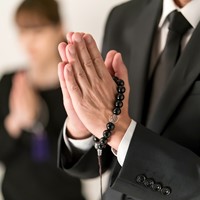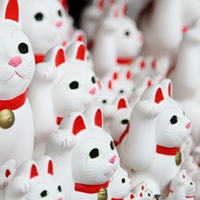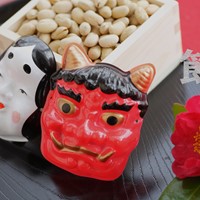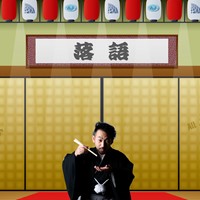Chopstick Etiquette in Japan : DOs and DON'Ts
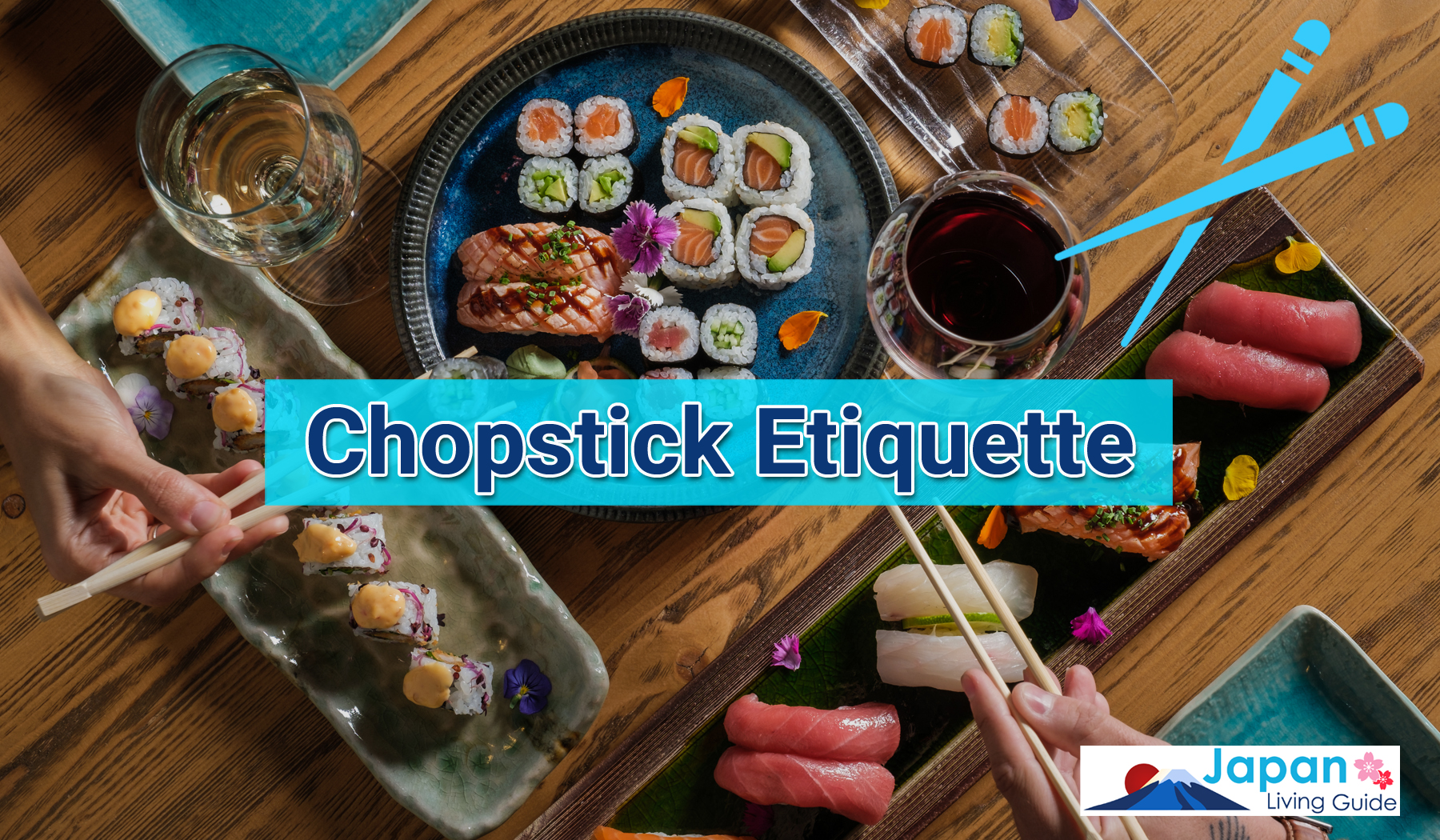
This page contains affiliate links.
Most people around the world are familiar with chopsticks these days, whether from eating out in a favourite Asian-cuisine restaurant or chowing down on cup noodles at home.
But whether you think you've mastered the skill, you'll find there's more to learn about the unique ways in which Japanese use chopsticks – called hashi, or ohashi if you're being polite - than you may have expected.
Especially if you'll be eating with business colleagues, it's worth practicing good chopstick etiquette and learning the taboos. Once you've got the basics under your belt, you can move on to the more complicated do's and don'ts, gaining insight into the Japanese art of dining at the same time. Soon you'll be a refined user of chopsticks – and impressing your friends and colleagues.
>> Japanese Personalities & Culture: Getting Along in Japan
>> How to Use Japanese Tableware: To Hold or Not to Hold?
8 Great Chopstick Etiquette Tips
1. Holding Chopsticks Correctly
It's important to get a grip on just how to hold chopsticks, as this is the foundation for everything else. Secure the bottom chopstick between the base of your thumb and your fourth finger; the opposing pressure keeps it snug. Hold the top chopstick between the second and third fingers, lightly secured with the thumb; this top one moves. Although it can feel difficult, once you get the hang of it you'll actually find you can do a lot more with the correct technique.
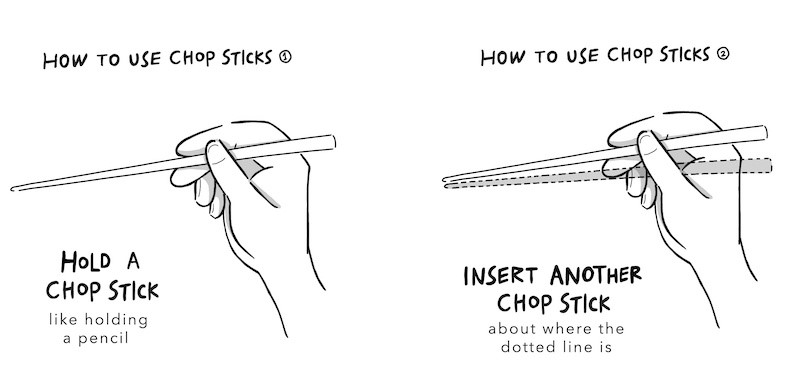
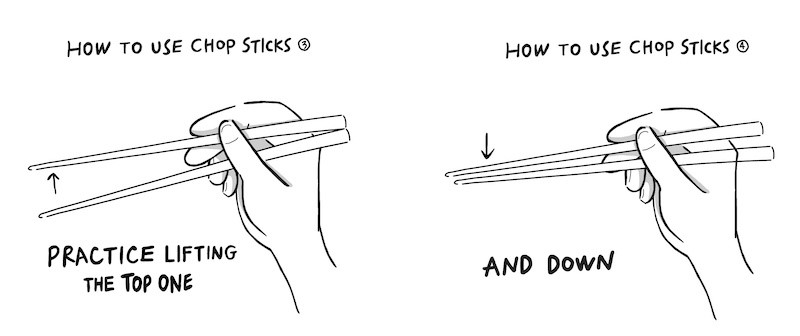
Never use one chopstick in each hand (a no-no called chigiri-bashi) and avoid holding them together to shovel food into your mouth (yoko-bashi). It's also best to adjust them with your free hand, rather than tapping them on the table or plate to straighten them (soroe-bashi). There are many Japanese words ending in -bashi, a variation of hashi, which should show just how important chopstick etiquette really is.
2. Using A Chopstick Rest
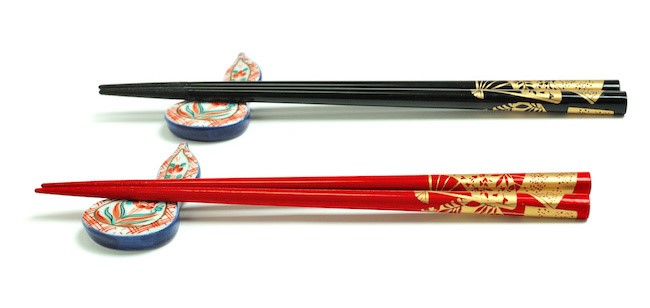
Placing chopsticks like a "bridge" on a plate, bowl or other tableware is called "watashi bashi" and is considered a bad etiquette. Simply use the chopstick rest (hashi-oki) provided. If you are in a fancy restaurant or formal setting you should definitely not rest them across your bowl . If it is a casual establishment and there is no chopstick rest, you can fashion one out of the paper wrapper your hashi came in, or use the edge .
If there is no chopstick rest or chopstick bag and the meal is served on a circular or square tray, the left-hand end of the tray is used as a chopstick rest and the chopstick tips are hung on it.
If neither a chopstick bag nor a tray is available, hang the chopstick tips on a small plate or a plate to take the place of the chopstick rest.
After finishing the meal
If you use disposable chopsticks (waribashi), put them back in the chopstick bag and fold over the end of the bag so that they can know you have finished the meal. If the tips of the chopsticks are dirty, wipe them clean using paper or Kaishi. Do not accidentally use your mouth to remove the dirt.
Place the chopsticks horizontally on the table or tray on your side, with the tip to the left. In Japan, it is considered taboo to place chopsticks vertically, as it is impolite to leave the tip facing the other person.
3. Putting Chopsticks in Your Mouth
You may be surprised to learn that while chopsticks take food to your mouth, they shouldn't ever go into your mouth. Moreover, don't lick your chopsticks, something called neburi-bashi, or use your mouth to remove rice stuck to them, which is mogi-bashi. Holding chopsticks with your mouth is considered rude, as is chewing on them (kami-bashi) or picking your teeth clean with them (yoji-bashi).
4. Keeping your Chopsticks Clean
You can't clean them with your mouth, but how about swirling them in a bowl of miso soup to wash them? Unfortunately, this too is frowned upon. Chopstick etiquette dictates that if you use your chopsticks properly, you shouldn't have to clean them during the meal. Traditionally, no more than an inch should touch any food, which means you ought to pick up items with the tips and not plunge them deep into bowls. Similarly, don't stab your food to pick it up (sashi-bashi). All of these taboos around keeping the hashi clean are aimed at making them last longer.
5. Motioning with Chopsticks
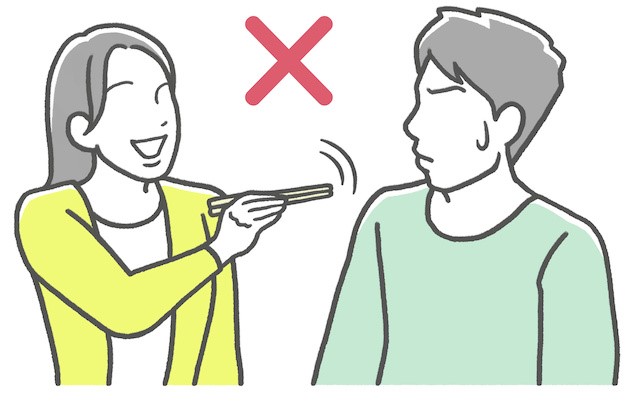
You would not point at someone with your steak knife, so bear in mind this is how it looks in Japanese dining if you use them to point at someone, also called sashi-bashi, or make big gestures with your chopsticks while talking, which is furiage-bashi. When you think about how to hold chopsticks in the least offensive way possible, remember to use measured movements and don't overreach.
6. Sharing Meals Using Chopsticks

Japanese cuisine involves a lot of shared dishes, but you should always place food on your own plate before putting it in your mouth. There will often be a set of chopsticks for serving, so use these rather than your own if they're available. Holding chopsticks while hovering over various bowls of food (mayoi-bashi) looks indecisive, so make your selection quickly and smoothly.
You should never dig in a bowl to find your favourite bits (this is called saguri-bashi), or pick out bits you don't like (hane-bashi), or intentionally return food to a bowl after picking it up (sora-bashi); these actions make you look greedy. You may also give this impression if you go from one dish straight to another (utsuri-bashi) without taking bites of rice in between.
Avoid letting liquid drip from your chopsticks or from juicy or saucy food (this is called namida-bashi) and just to make things more challenging, placing your hand under the food as you transfer it (tezara, literally ‘hand plate') is disapproved of as it looks very unskilled.
7. Moving Bowls Around

There is chopstick etiquette around moving bowls, too. An obvious one is to never use your chopsticks to shift a bowl, especially not to drag it closer to you, as this action (called yose-bashi) looks selfish. Another important action to avoid is holding chopsticks in your hand as you pick up a bowl with the same hand, something called mochi-bashi – pick up the bowl with your free hand instead.
It is also considered impolite to request a refill while holding your chopsticks, which is called 'uke-bashi'. This goes against proper etiquette, so it is recommended to set down your chopsticks before offering your rice bowl for a refill.
If this is all a bit confusing, just remember the principle of only moving bowls with your free hand. If you don't feel like thinking about any of this, simply place your chopsticks on the rest before you make a move.
8. Cultural taboos with Chopsticks
There are taboos to avoid if you don't want to give offense, and all are associated with funerals or death.
1. Don't pass food from chopsticks to chopsticks; this resembles the way cremated remains are transferred to an urn.
2. Never stand your chopsticks upright in your bowl (tate-bashi). At funeral ceremonies, a bowl of rice is left out with two chopsticks stuck into it vertically.
Chopstick Etiquette is Much Simpler than it Sounds
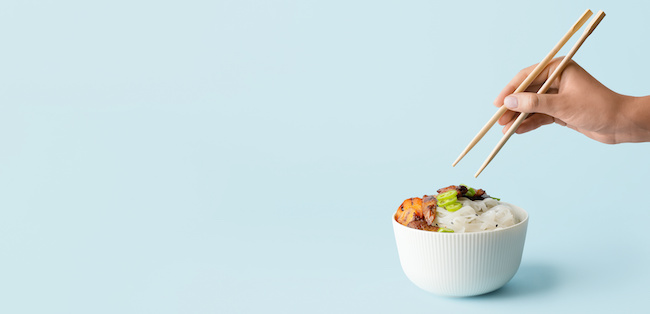
It may feel like there are too many rules to learn, but as long as you're making an effort you'll be forgiven any errors—truth be told, even Japanese people have been known to make mistakes! Chopstick etiquette is based on the central principles of showing courtesy to your fellow diners and preserving the harmony of the dining table. Since etiquette is important in all aspects of life in Japan, these principles will serve you well in other situations too, especially if you are eating with coworkers and getting the hang of business etiquette in Japan.
